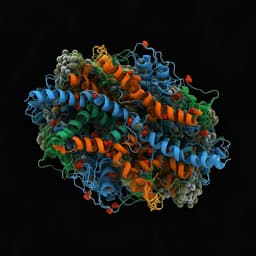
Chemistry
Protein nanofibril design via manipulation of hydrogen bonds
N. Aggarwal, D. Eliaz, et al.
This innovative study reveals how the manipulation of hydrogen bonds in amyloidogenic peptides can significantly alter fibril morphology, structure, and nanomechanical properties. Discover insights into the intricate molecular interactions that shape protein supramolecular constructs, conducted by Nidhi Aggarwal, Dror Eliaz, Hagai Cohen, Irit Rosenhek-Goldian, Sidney R. Cohen, Anna Kozell, Thomas O. Mason, and Ulyana Shimanovich.
~3 min • Beginner • English
Related Publications
Explore these studies to deepen your understanding of the subject.







